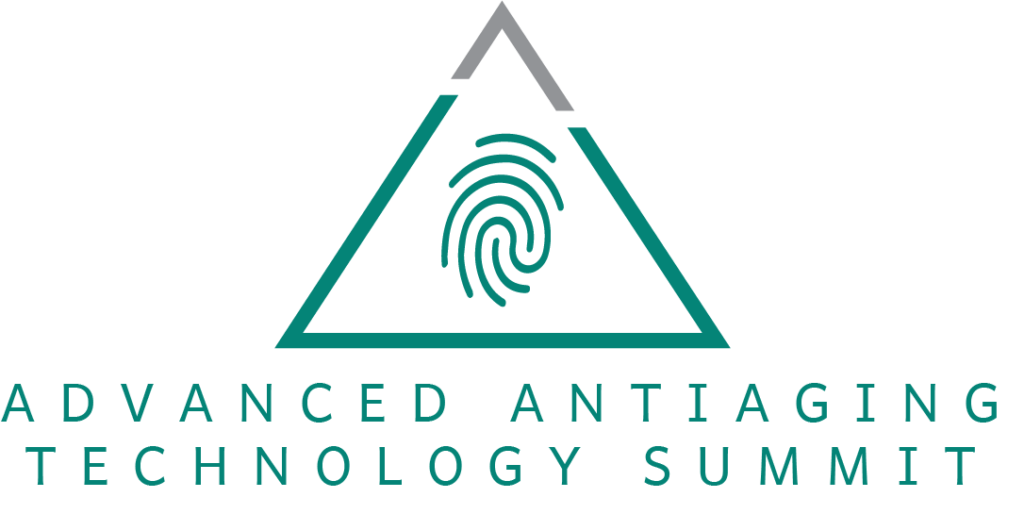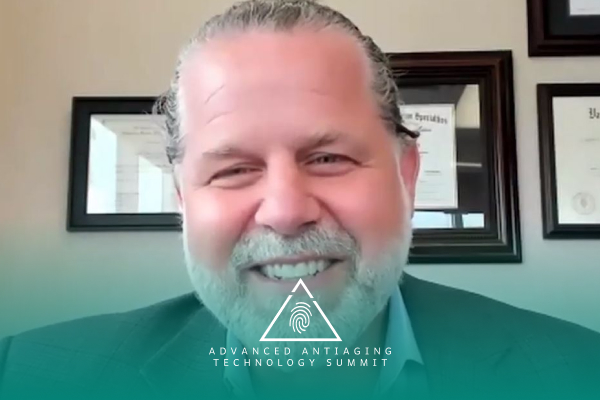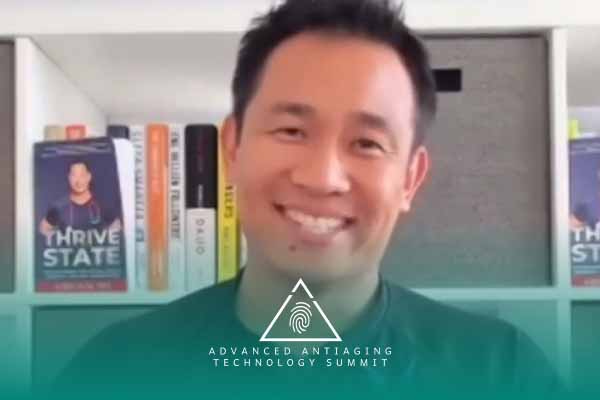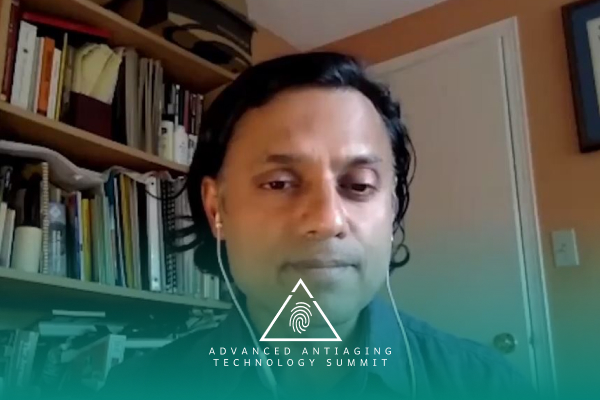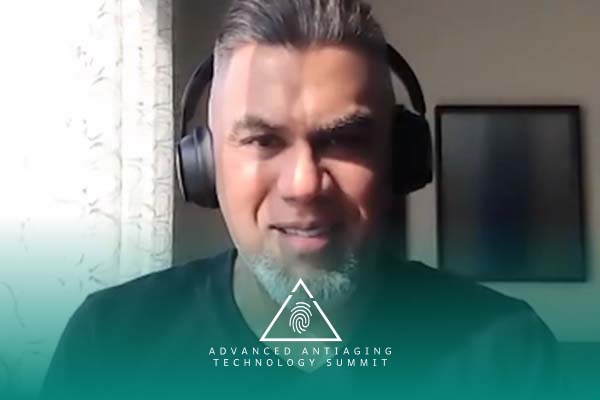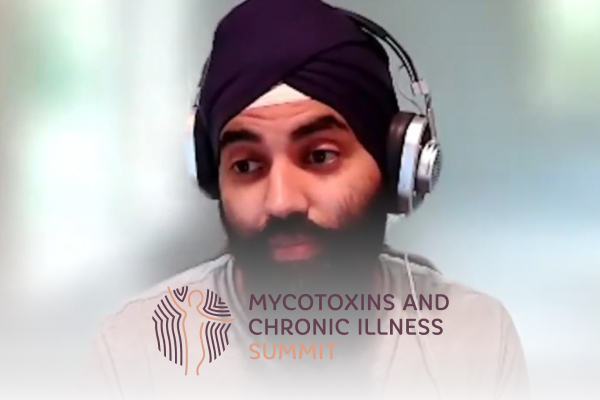Join the discussion below
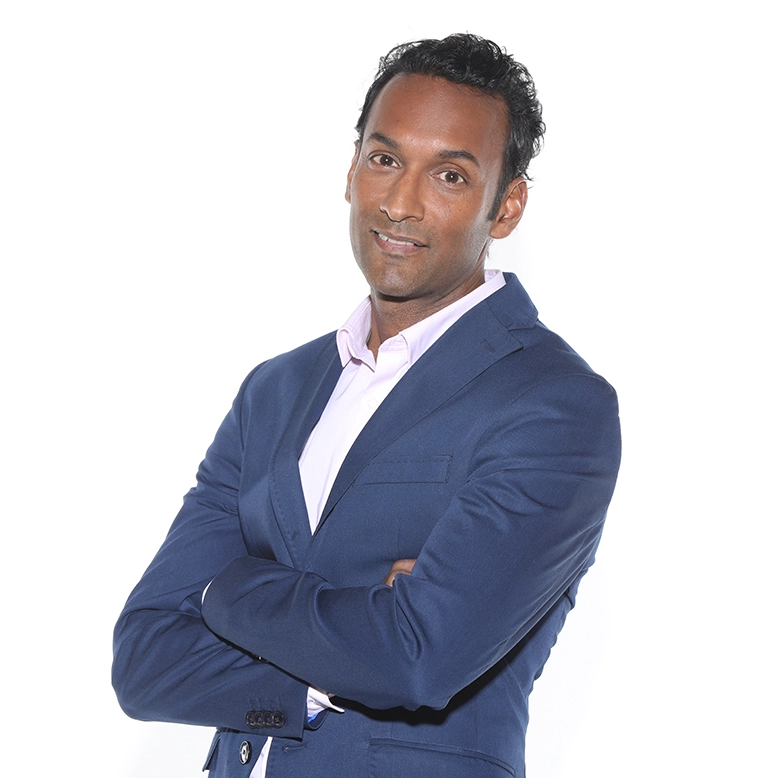
Dr. Goel is a medical physician and founder of Peak Human Labs. His mission is to speak knowledge of the latest cutting edge medical tools and science in order more people to live in a Peak mental, physical and spiritual state. You can learn more about his work at longevity.peakhuman.ca. Read More
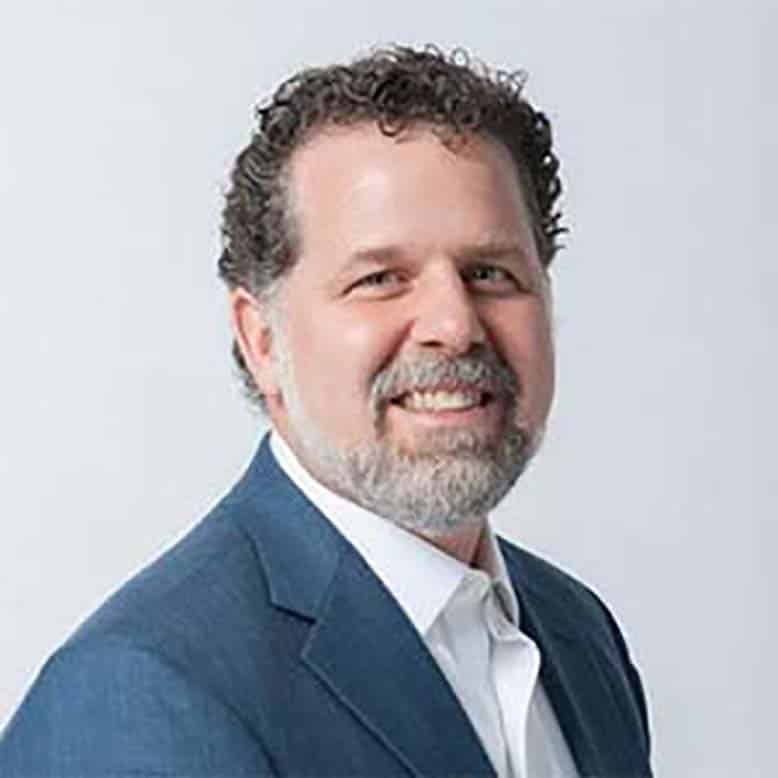
David Haase, MD is a Vanderbilt, Mayo Clinic, double board certified, VERY CURIOUS physician. In 2003 Dr. Haase founded the MaxWell Clinic in Nashville, Tennessee as a living laboratory to explore the question "What Creates Health?" He and his remarkable team are dedicated to innovation in the fields of nutrition,... Read More
Plasma Exchange and Cellular Health: Dr. David Haase discusses the importance of plasma exchange in improving cellular health and its potential impact on various medical conditions. He explains that plasma is the vital fluid that influences cellular function and that optimizing the cellular environment through plasma exchange can lead to significant health benefits.
Applications in Neurodegenerative Diseases: The video highlights the potential of plasma exchange in treating neurodegenerative diseases such as Alzheimer’s. Dr. Haase references a study called the AMBAR trial, which demonstrated a substantial decrease in the progression of Alzheimer’s in patients who underwent plasma exchange. He emphasizes the importance of personalized medicine and suggests that these treatments could also benefit individuals with a family history of such diseases.
Integration with Other Therapies: Dr. Haase discusses the synergy between plasma exchange and other therapies, including stem cell treatments. He suggests that improving the internal environment through plasma exchange can enhance the effectiveness of regenerative processes within the body. This integrated approach to healthcare may lead to better outcomes for patients seeking longevity and vitality.
Sanjeev Goel, MD, FCFP (PC), CAFCI
Hi, I’m Dr. Sanjeev Goel, and I’m here with Dr. David Haase for the Antiaging and Technology Summit. Welcome David, how are you?
David Haase, M.D.
Oh, Sanjeev, I’m really good. Thank you so much for having me. This is really an incredible, incredible arrangement of speakers you’ve pulled together here.
Sanjeev Goel, MD, FCFP (PC), CAFCI
Thank you so much. I’m so excited. I just want to read a little bit of your bio here. Dr. Haase is a doctor, teacher, and innovator who’s deeply committed to maximizing wellness one unique person at a time. He received his medical training at Vanderbilt University and completed his Family Medicine at Mayo Clinic in Rochester. He’s a board certified in Family Medicine, and one of the first Institute of Functional Medicine graduates. He is Founder and Director of the MaxWell Clinic, established in 2003. Has two locations in Tennessee.
He’s co-founder of MDOmics, a company that analyze complex data sets to enable more precision clinical care, as well as a not-for-profit that helps youths to make healthier choices for their bodies and their communities called TheFoodInitiative.org. And you’re also Chief Medical and Innovation Officer for XYMOGEN, a leading professional nutraceutical company as well as Chief Medical Officer of TrendShift, which specialize in personal risk factor monitoring, health trend tracking, and health-care cost reduction for large employers. And one other thing, serves as medical advisor to Evoke Neuroscience. You’re a sought-after lecturer and teaches internationally. You’re a professor at University of South Florida, and we can keep going on and on but let’s get started. I specifically kind of asked-
David Haase, M.D.
I think you got me tired. Sanjeev, you got to be tired of that. I need a quite couple-
Sanjeev Goel, MD, FCFP (PC), CAFCI
I know
David Haase, M.D.
of these things.
Sanjeev Goel, MD, FCFP (PC), CAFCI
I could have kept reading. I could have kept reading but we want to hear more from you. So I specifically asked you because I heard that you’re an expert in what’s called plasma exchange, but maybe you want to just kind of tell me a little bit about that, and how did you even come across this type of this treatment modality that I think it’s kind of this at the edge of science.
David Haase, M.D.
Yeah, absolutely. And certainly the edge of practice. It’s really, really exciting stuff. Well, my personal practice is actually really interesting. I take care of deep dive clients and one of my clients some years ago came to me and said he was actually a CEO at a large Silicon valley firm, and he said, I asked him, well, what do you want to accomplish by working together? And he said, he said “Well, I want to live forever.” And it was the first time I was like, okay, I got to take this guy seriously, because I use a product of his every day and I need to and I was like, huh. Yeah, it was a paradigm shift.
So, I started looking down along the longevity pathway in a far more intense way. I took kind of a sabbatical of several months and dove into like, well, what really holds water in this space? What is fundamental? What’s safe? What is accessible? And I came upon this idea of parabiosis and this is a studies done by Michael and Irina Conboy at the University of California, Berkeley, and they were actually able to show some longevity and age reversal by causing mice of their cloned mice, of different ages to share a circulation for a period of time.
Sanjeev Goel, MD, FCFP (PC), CAFCI
Yes.
David Haase, M.D.
They took these cloned mice.
Sanjeev Goel, MD, FCFP (PC), CAFCI
So, they attached the two mice, right?
David Haase, M.D.
Yeah, what’s that?
Sanjeev Goel, MD, FCFP (PC), CAFCI
They attached the two mice together, is that right? The old mice and a young mouse.
David Haase, M.D.
Right, exactly. And so, they took this old mouse and young mouse are clones of each other and they were scurried around the cage, and after about a week of being attached to each other, the old mouse start to turn young. Liver started to regenerate. Osteoporosis started to reverse. Fatty liver disease reversed in the old mouse. Hair started to grow back in. Muscle recovery to injury improved, and new neurogenesis ensued. I mean like what, what the heck, what’s going on here? And then was even more interesting is the young mouse became stunted.
It was poisoned by exposure to old. So, and that was really remarkable, and then they watched these two mice for a while then after about a month, they split them apart and the young mouse was healthy and happy and lived to its normal expected lifespan, and a few mice that they didn’t sacrifice for other studies, they live to closer to the lifespan of the young mouse. And so in other parabiosis studies, there has been some clear suggestion of longevity and an age extension that went on, which was just really interesting. Now why that’s interesting to me especially, ’cause I’m an Apheresis Specialist. So one of the things I do clinically in apheresis is this process by which you remove blood from a person, you separate it into its components, and then you either remove parts of it, modify parts of it, add things to it, and then put that new, reconstituted blood back into the body. It’s basically doing an oil change with the engine running on the blood.
So that’s what apheresis is, and I recognize it’s like, wow, this parabiosis study that is clearly there’s something happening in the plasma of these mice. Can we mimic this by doing apheresis in humans to reverse neurodegeneration, to extend longevity, and to use this plasmapheresis in a way that is outside of its usual use, which is the reversal of very severe auto-immune disease or the reversal of very severe hypercholesterolemia or toxicity. So this is taking a very well-established known process, medical process and saying, huh, if we did it somewhat differently and looked at other factors, could we actually reverse age? Could we reverse slow, stop, and reverse neurodegeneration?”
Sanjeev Goel, MD, FCFP (PC), CAFCI
Is it very different?Is it very different from the procedure let’s say, for auto-immune disease? Did they found that the people who had the plasma exchange or apheresis done for let’s say, rheumatoid arthritis? Did they have benefits like other benefits, of aging benefits?
David Haase, M.D.
So that’s really interesting because the old timers in apheresis have said for a long time, they said, “Wow.” We’re kind of surprised how much better people get when we do apheresis treatment on them for multiple sclerosis, for neuromyelitis optica, for some of these chronic neurologic, chronic demyelinating neuropathies. So you’re treating these very severe auto-immune diseases and they have side benefits, it’s almost that they get better than they should have for just dealing with the auto-immune disease component, and what we realize, I think what’s really exciting about all this is why does this work? Why did it work? What happened? And there’s a couple of great studies that have come out to help us elucidate that.
Sanjeev Goel, MD, FCFP (PC), CAFCI
Yes.
David Haase, M.D.
So yeah, one of the studies. Go ahead, go ahead.
Sanjeev Goel, MD, FCFP (PC), CAFCI
Yeah. No, tell me, we want to understand, yeah. Why would it work?
David Haase, M.D.
Yeah, why would it work, right? Yeah, it’s very interesting. And so again, the Conboy’s did all kinds of great follow-up studies looking at this data and to say, “Huh, is it that we put in young plasma into, young plasma from this young mouse into the old mouse.” Did that help anything, right? So they pulled plasma out of a young mouse and then just injected into old mouse and sure enough there were positive benefits there, and then they did an even harder experiments, which is they did apheresis on an old mouse.
So they pulled the old plasma out of the old mouse and then replaced that with fresh, clean albumin, like the the liquid part of the blood, and sure enough that also showed benefit. So here’s this very interesting situation that along with our kind of our fundamental precepts in systems medicine, that how do you heal a system? Well, first of all, you recognize it’s a system, right? You don’t overly reduce things down too much, and then you either add in something that is going to promote healing or you’re gonna remove something that is increasing degeneration. It turns out that in this process, it appears that both sides work, adding in youth or removing age shifts the phenotype of those experimental animals.
Sanjeev Goel, MD, FCFP (PC), CAFCI
What do you think it is about the young blood or the problem with the old blood that’s making impact on aging? What is it?
David Haase, M.D.
And isn’t it funny? Everybody asks that because we have a drug mindset, don’t we? We think there’s a secret ingredient, and like, “Oh, there’s a GDF11.” “There is a cloth co-factors is that,” You can rattle off all kinds of magic molecules, and the failure of all of them is that if you add in one magic molecule into a dynamic system, it’s inevitable, you’re gonna throw off a whole bunch of other stuff that isn’t progressing in step. If the human being is a really complex dynamic system. So there are, when we do reductionist interventions especially with a lot of our drugs, drugs that are well-dosed poisons that’s why we have a license to prescribe them, right?
They have a therapeutic window, and there are things that block this, inhibit that, stimulate this, and they push the body and they really basically decrease the flexibility of the body’s ability to adapt, and so therefore they have kind of some unintended side effects. So, when we look for like, what is the factor everybody wants to, okay, how can I get this in a pill, right? And it’s not that. It really is, this is a massive systems intervention. The very interesting thing about when patients come to us and patients come in from all across America and the world, and they come into the clinic to do this plasmapheresis. What occurs is that we’re rooming everything that is in the plasma or we’re moving the plasma, three, four liters of plasma go out and then replacement fluids go, come back in.
Sanjeev Goel, MD, FCFP (PC), CAFCI
But it has to be that amount? Like I’m saying, if somebody goes for a dessert is there a health benefit to regular blood transfusions? I mean, like removing, I mean not blood transfusion, like giving, donating blood, could that have that?
David Haase, M.D.
We know that there is a survival benefit for men especially, that donate whole blood on a regular basis. That’s a healthy behavior. I encourage everybody to donate blood. Now, and is there a benefit to donating plasma? Possibly, when you donate plasma that’s a little different of an experience ’cause you’re just putting saline in as a replacement. But I think there’s possibility that just donating plasma has some benefit as well, but you don’t get anywhere near the oil change effect of both removal and replacing fresh, clean albumin, which ends up acting kind of like a sponge for toxins, and so there’s a lot of theory behind this, Sanjeev. And we’ve been studying a huge number of variables.
We don’t think that there is a, we think there’s a better way for an individual, so the individualization of this process has been a real important strategy of ours to say, how do we do our very best at decreasing the likelihood of side effects and also increasing the likelihood of benefit that’s just data and time is gonna tell us that we don’t have a, or there’s not a clear answer to all of that.
Sanjeev Goel, MD, FCFP (PC), CAFCI
Why do you think we need to like three or four liters, it sounds like a lot, is there a particular reason why you think it needs to be that much? Is there an incremental benefit let’s say, from a lower amount to higher amount?
David Haase, M.D.
So I think that whenever you’re looking at volumes of plasma that are exchanged, we calculate this based upon, what is your total blood volume? And then what proportion of that blood volume is occupied by cells versus plasma? So all the plasma you have in your body, we would call one blood volume, and if you want to remove one blood volume or you do a full volume exchange, does that mean you remove all their plasma and replace all their plasma? No, it doesn’t because what happens is when you first start doing the exchange, you’re pulling out just their plasma and the longer the procedure goes on, the more you’re,
Sanjeev Goel, MD, FCFP (PC), CAFCI
Putting some in.
David Haase, M.D.
Yeah, you’re removing what you had last put in. And so, and so small exchanges, small exchanges have the benefit of having a very almost everything you’re pulling out at the beginning of an exchange is the old plasma. So smaller exchanges may work, but typically the individuals we see have a need for the full volume exchange, and so one of the most important studies in this is the AMBAR trial. So, a large part of our justification in moving forward with treating Alzheimer’s disease, dementia, and other types of neurodegeneration comes out to the AMBAR trial, and the AMBAR trial looked at nearly 500 patients that with mild and moderate Alzheimer’s disease.
Now, because apheresis is such a niche specialty, there’s very few of us who do it. It’s a pain in the arse to actually provide. There’s a lot of machines, you need highly trained staff, and it’s challenging to provide this service, and so there’s not a lot, and there’s also not a large call for it overall in the nation, because it’s typically reserved for those people who are very sick with auto-immune disease. So the studies that we have in plasmapheresis are really small. So this turns out to be like the largest study ever done in plasmapheresis randomized, double blind, placebo control, multinational, multicenter trial, and what they did is they looked at individual with a moderate to mild Alzheimer’s disease.
Now, there’s nothing moderate about moderate Alzheimer’s disease. It is a very severe state of neurodegeneration. Individuals often don’t remember who families are, they’re already institutionalized. It’s a terrible thing to have moderate Alzheimer’s disease. And so, these individuals were randomized between getting plasma exchange done, 14 different plasma exchanges, excuse me 18 plasma exchanges over 14 months. And what was found in comparison to placebo that in the moderate Alzheimer’s disease group they had a 61% decrease in the rate of progression of their Alzheimer’s disease, 61% decrease in their progression over 14 months, and that was in functional markers in behavioral markers, and even in caregiver rating scales, astounding, but what’s even more interesting is in mild Alzheimer’s disease compared to when they began they actually showed improvement over the course of that year in cognitive function.
So not just better than placebo, but actually they were better off 14 months later than when they had started in terms of cognitive function. And then also, the people who ran the study that had a brilliant job. I think it was a phenomenal Seminal study. Somebody should get a Nobel prize for this, and I think that there is a, and then what they did is they looked at the CSF biomarkers. So they actually were able to show also that in the plasma exchange, there was a normalization of the CSF biomarkers of A beta 42 and phosphorylated tau, which are two of these misfolded proteins that we think are both cause and perpetuaters of Alzheimer’s disease in some ways. And then they also looked at FDG PET scans.
So an FDG PET scan is looking at what’s the metabolism of the brain and how well does that metabolize them. Anyway, and so in comparison to placebo, the individuals who got plasma exchange had less cellular death over that course of time as measured by FDG PET, they were able to retain more neurons. So the real question is, right? The real question is, wow, if we saw that happen in mild Alzheimer’s disease. When would that actually be beneficial to start? If you want to keep your brain you don’t want to wait until you have mild Alzheimer’s disease so you can stay at mild Alzheimer’s disease that wouldn’t be optimal either, but at what point in time is this individual starting to slip having cognitive impairment? Should this be come part of our treatment paradigm? Anyway, that takes us into really talking about this in the realm of longevity so.
Sanjeev Goel, MD, FCFP (PC), CAFCI
Yeah, I’m just curious though, that was there any patients who had A beta 42, did they look at that with those patient sending different response?
David Haase, M.D.
No, they didn’t. And also there’s a little criticism in the study that they probably didn’t do as good a job as they should to confirm the diagnosis of classic Alzheimer’s disease in these patients, which actually in my mind makes it a stronger study because I don’t think that this is not something special about Alzheimer’s disease. We’ve been observing in our own practice benefit with individuals with Parkinson’s disease and we’re scratching our heads because Parkinson’s disease has a very high placebo rate for any intervention that you do. So we’re continuing to track people longitudinally, but I think that any of the diseases that have misfolded proteins as a cause or that have increased oxidative stress, inflammation, have I just kind of named all chronic disease, right?
I think, here’s the interesting things for you Sanjeev, right? Think of plasma. What is plasma? Plasma is the grand interface between the outside world and your inner most parts. We talk about gut function and how important the gut is. Well, the gut only gets to the cells via the plasma. We breathe, the stuff we breathe dissolves into plasma and red blood cells, and the things we put on our skin end up in our plasma before they get to our inner organs. It is the grand interface. So if we were able to, when we live cleanly, when we make great decisions about what we breathe, what we put on our skin, what we eat, that cleans our own plasma.
So this is a great, I think, a wonderful affirmation of the prime importance of lifestyle medicine, living cleanly, and how all of those things matter because, do you want to poison your own plasma? You have influence over that in your daily life. And so, as opposed to thinking that this is the only way that this is going to help longevity. I think it gives us great credence that all of these other facets have incredible power. We have incredible power to purify our own plasma, right, by the choices that we make in a day, and that’s really good news.
Sanjeev Goel, MD, FCFP (PC), CAFCI
Yeah, that’s pretty, I’d never thought of it like that, but I think it’s like one of the, it’s a whole plasma something, the great unknown stuff. And in fact, we don’t really understand it, and just by cleaning out and this big work exchanging it has made such a huge impact, and that’s such a big learning. I think it’s a big, aha.
David Haase, M.D.
Yeah, yeah, yeah.
Sanjeev Goel, MD, FCFP (PC), CAFCI
I think of it like that. Do you think that somebody who’s, let’s say in their forties or having no Alzheimer’s but may have a family member or a father or mother who has it. Do you think that this will have some impact as well? Like this type of treatment or they’re thinking about cleaning out plasma could have impact on their longevity?
David Haase, M.D.
Yeah, I do. So if we go back to basic science again, right? What do we see? What do we see in everybody that works with stem cells or cell cultures? The media makes a difference, doesn’t it? Right? The fluid in which a cell lives greatly determines how healthy that cell is going to be, and the same thing happens for our own cells. The media makes the difference and the media is our own plasma. So in cell culture experiments, we know we can pull out stem cells from old mice, and they will act old. You pull out stem cells from young mice, they act young until you put them into a different environment.
If you put old stem cells into a young niche, into a young habitat of young plasma, they start to behave young. And the same way with young stem cells, you put them into an old habitat, they start to behave old. I mean, I always think of like Betty White and George Burns here, right? They all hang out with young people. And so therefore they act young, right? And the same thing with our age stem cells, our age stem cell is kind of act to their age of their environment, you know? And so, if we can put our stem cells that are in our body in a younger environment, they start to act younger. And so this has been shown very clearly. And as we clean out the body that’s what the rat studies then showed is that there was reversal of fatty liver disease, of muscle in sarcopenia, and of neurodegeneration. When the environment was unolded, right?
It was cleaned out in that way. Now, how does this apply to the biohacking community and longevity? We deal with a lot of these individuals that are really focused on maximizing both of their total vitality and the number of years they get to enjoy that vitality. And I think there’s a tremendous opportunity here. We’ve been tracking marker, a whole bunch of aged markers with some of these patients. And like, for instance, and we have modifications on our, what we call regenerative plasma exchange because how do you maximize the potential benefit? And we discussed some studies back that we had over a four year reduction in the whole methylome age marker after one of these modified regenerative plasma exchange.
Sanjeev Goel, MD, FCFP (PC), CAFCI
I was just about to ask about this. You mean, the epigenetic aging, the DNA methylation assay.
David Haase, M.D.
Yeah, yeah, yeah. So, we use the test from true age and that looks at over 850,000 different CPG methylation sites, and then that’s mapped across, and it’s really remarkable. They’re starting to do some expansions of that data set that help us understand what parts of your, how fast are different parts of your physiology aging? So we’ll be able to track, how quickly is your insulin regulation system aging? How rapidly is your cytokine balance aging? And I think, you test don’t guess, right? And what are the real results for this human being?
And I’ll tell you that results vary, and results vary because that individual doesn’t come to, this is not a magic procedure. I mean, it has to be put in the context of whole person care and understanding, I think, and that’s at least what we found. So the patients who are best prep for this have the most benefit. So I’m thinking this is absolutely, sorry Sajeev. I think this is absolutely going to be fundamental. All of the anti-aging. If you can improve your internal environment it’s going to make all these other interventions most more useful.
Sanjeev Goel, MD, FCFP (PC), CAFCI
I have two questions. One is you touched on stem cells, and I’m just curious, people are getting stem cell infusions and stem cell injections. Do you think it matters like people are using their own stem cells versus umbilical cord blood stem cells. Do you think, ’cause you’re talking about young and old stem cells. Do you think this is going to have an impact? I mean, and also is it, how does it compare let’s say, the stem cell treatment versus let’s say, plasma exchange, What’s your thoughts on that?
David Haase, M.D.
I think it’s a great example and I think that there’s probably gonna be other speakers who will do a whole lot more speaking about the different types of stem cells and what should be used, but I think what’s really important is it’s always better for your own stem cells to be doing the work, but not just your own stem cells that are grown in a vial. The stem cells you actually want to do the repair or the stem cells that are resident in your tissue. So the satellite cells that are in your liver, you want those satellite cells to activate and start doing the job of repair. You don’t want to have to get an injection of expanded mesenchymal cells and hope they go to the right place and do the right things.
What you really want is for your native regenerative processes to be reminded that they can do the job of repairing where they are. And I think that’s the real advantage of looking at this from a plasma exchange standpoint, we’re going to see and we are, have really good initial data of that there is a shift in cellular behavior, and what we know in the basic science is that stem cell function is improved with regard as long as we improve the cellular habitat. So, but absolutely, we are forging a way with appropriate understandings of these compounds exosomes, stem cells. I think that the combinations of these processes and research is really profound, I think that.
Sanjeev Goel, MD, FCFP (PC), CAFCI
You think these could be synergistic? Using these could be synergistic treatments that can add to each other?
David Haase, M.D.
Well, I mean, it’s a system, right?
Sanjeev Goel, MD, FCFP (PC), CAFCI
Yeah.
David Haase, M.D.
It’s a system. So the question is, when is it synergistic? And for whom? And in what dose? And at what timing? And how frequently? And all that, so, having the database of looking into these things is part of our work. So, ’cause the whole question is, What works and whom, when, right? We shouldn’t be treating anybody as a cookie cutter process. Instead, how do we understand that we can have engaged therapies that have the least likelihood of causing harm and the most likelihood of causing benefit, and for that person at that time, and that’s frankly, it’s not a great business model, right? Personalized healthcare, personalized healthcare takes time and effort and understanding, and I think everybody’s looking for the one quick fix, but I think this is an amazing tool in the context of understanding human physiology. I think this is giving us great opportunity for reversing neurodegenerative disease, slowing, stopping, reversing neurodegenerative disease. I think this is giving us great opportunity for age extension, for decreasing tissue, and organ injury, and also it’s a classical indications of severe auto-immune disease and hypercholesterolemia. I think this therapy is underused even in those circumstances because it can be quite life-changing
Sanjeev Goel, MD, FCFP (PC), CAFCI
What’s the next year look like? What’s exciting you about this field? What do you think that’s gonna happen this coming year understanding of plasma exchange?
David Haase, M.D.
Well, COVID threw a big monkey wrench in our development. We were really the first group that started to provide this, and looking at this in the whole longevity space and neurodegenerative space, but what we’re really interested in and looking forward to is how do we standardize processes and continue to gather data and help train other clinicians in this process and understand more fully, how does it work? And in whom does it work? And how can we make that, how can we deliver that in the most, in the safest, and most cost effective fashion? So a lot to learn here, but what a fun thing to get to be in the center of, right?
Sanjeev Goel, MD, FCFP (PC), CAFCI
It’s like science fiction. Science fiction comes to life. This is it exactly.
David Haase, M.D.
It’s just crazy. I mean, it’s all the bad jokes are here, right? It’s like, getting your own personal blood boy,
Sanjeev Goel, MD, FCFP (PC), CAFCI
Vampires.
David Haase, M.D.
I mean, all the bad jokes are here, but the funny thing is that there’s always been power in the blood. It’s fascinating throughout all of human history and health. We’ve recognized that there’s this vital force and in Chinese medicine the vital force, you always want to work on the blood first in the traditional Chinese medicine environment, right? We know these things to be true and go like, ha, it may actually be, it could actually be that simple, which is really, really exciting.
Sanjeev Goel, MD, FCFP (PC), CAFCI
Okay, so where should our, go ahead sorry. We were just saying-
David Haase, M.D.
No, no, go ahead. Go ahead.
Sanjeev Goel, MD, FCFP (PC), CAFCI
I was just going to say, where should our listeners, viewers go for more information?
David Haase, M.D.
Oh, absolutely. Go to our clinic website, maxwellclinic.com. That’s really where we’ve kind of put the center piece of our information. Yeah, MaxWell Clinic. So our clinic means it’s for maximizing wellness. We’ve been in a functional integrative medicine clinic for nearly 20 years now. We’ve been around and we are leading the charge in personalized systems medicine. It’s a real joy to get to play in the sandbox of how do humans heal?
And I love patients. I mean, I love seeing people get better, and I also love seeing clinicians get joy back in their hearts by getting to practice medicine as they intended to when they went to medical school, right? And it’s a good thing most of us are idiots as to how medicine really works when we go to medical school, right? Some of us wouldn’t necessarily sign on and go like, “Eh, really, the way it works?” But I love my medical colleagues, it takes everybody to help move a health forward. So, yeah, so it’s maxwellclinic.com and to start there and we’ve got resources to learn more.
Sanjeev Goel, MD, FCFP (PC), CAFCI
I’m so glad that you took this time today and you are really a pioneer and I’m looking, we’re all looking forward to the work you’re doing ’cause it’s gonna revolutionize medicine. So thank you again, David. It’s been a real pleasure.
David Haase, M.D.
Oh, Sajeev. Thank you, thank you for having me, and it’s all of us together. All of us together are doing this work.
Sanjeev Goel, MD, FCFP (PC), CAFCI
When we become down.
David Haase, M.D.
All of, we’re just, I’m just going to do my part. Yeah, we’re in Nashville, Tennessee. Yeah, so come on down.
Sanjeev Goel, MD, FCFP (PC), CAFCI
I’m coming to Nashville, for sure. I heard Nashville is-
David Haase, M.D.
Come on down.
Sanjeev Goel, MD, FCFP (PC), CAFCI
the place to be now.
David Haase, M.D.
It’s a great place, yeah.
Sanjeev Goel, MD, FCFP (PC), CAFCI
That’s a great place to be in the US, yeah.
David Haase, M.D.
Yeah, yeah, yeah.
Sanjeev Goel, MD, FCFP (PC), CAFCI
Okay, awesome, thank you.
David Haase, M.D.
It’s a wonderful place.
Sanjeev Goel, MD, FCFP (PC), CAFCI
Take care.
David Haase, M.D.
All right, take care. Bye bye.
Downloads
